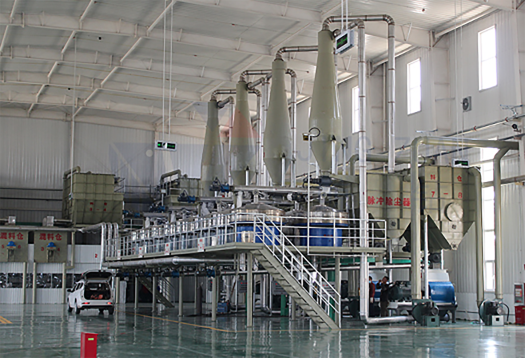
Nov . 29, 2024 13:16 Back to list
Understanding the Meaning and Applications of HPMC in Various Industries
Understanding HPMC What It Stands For and Its Applications
Hydroxypropyl Methylcellulose (HPMC) is a versatile semi-synthetic polymer derived from cellulose, a natural polymer found in plant cell walls. This compound has gained immense popularity across various industries due to its unique properties and multifunctionality. In this article, we will explore what HPMC stands for, its chemical structure, properties, and the numerous applications it has in our daily lives.
What is HPMC?
HPMC is a non-ionic cellulose ether, meaning it is a derivative of cellulose that has undergone chemical modification to enhance its solubility and functionality. Its structure is characterized by the substitution of hydroxyl groups on the cellulose chain with hydroxypropyl and methyl groups. This modification provides HPMC with water-soluble properties, making it an effective thickening and gelling agent.
The “H” in HPMC stands for hydroxypropyl, the “M” signifies methyl, and “C” represents cellulose. The combination of these groups gives rise to its rich array of properties, such as the ability to form gels, improve viscosity, and act as a stabilizer.
Properties of HPMC
HPMC exhibits several notable properties that make it suitable for a wide range of applications
1. Water Solubility One of the defining characteristics of HPMC is its excellent solubility in water, which varies according to its degree of substitution. This allows it to dissolve in cold water, making it easy to incorporate into various formulations.
2. Thickening Agent HPMC is widely used as a thickener in both liquid and semi-solid formulations. It can increase the viscosity without significantly altering the texture, an essential property for many applications.
3. Film-Forming Capacity HPMC can form a clear and flexible film, which is ideal for coatings in the pharmaceutical and cosmetic industries.
4. Stabilization HPMC acts as a stabilizing agent in emulsions and suspensions, preventing the separation of different ingredients.
hpmc stands for

5. Biocompatibility Being derived from natural cellulose, HPMC is biocompatible and is often considered safe for use in food and pharmaceutical products.
Applications of HPMC
Given its wide array of properties, HPMC has found applications in several industries, including
1. Pharmaceuticals HPMC is commonly used as a binder in tablet formulations, helping to hold the ingredients together. It is also used in the production of controlled-release formulations, where it regulates the drug release rate. Additionally, its film-forming ability makes it a popular coating agent for pharmaceutical tablets.
2. Food Industry In the food industry, HPMC serves as a thickening agent, stabilizer, and emulsifier. It is often added to sauces, dressings, and baked goods to improve texture and extend shelf life. HPMC is also used in gluten-free products as a binding agent.
3. Cosmetics and Personal Care HPMC is prevalent in cosmetics and personal care products, where it functions as a thickener, emulsifier, and film-forming agent. It is found in creams, lotions, and hair products, contributing to the product's stability and sensory properties.
4. Construction In construction materials, HPMC is added to cement-based products and adhesives to improve workability and water retention. Its film-forming properties also enhance the durability of these materials.
5. Agriculture HPMC can be used in agricultural formulations as a binder and stabilizer in seed coatings and fertilizers, helping to ensure even distribution and effectiveness.
Conclusion
Hydroxypropyl Methylcellulose (HPMC) is a remarkable compound that stands at the intersection of various industries. Its diverse properties make it an invaluable ingredient in pharmaceuticals, food, cosmetics, construction, and agriculture. As research continues to explore new applications and enhancements of HPMC, its significance is expected to grow even further. Understanding what HPMC stands for and its functionality highlights its vital role in improving the quality and efficacy of numerous products that we use every day.
-
Versatile Hpmc Uses in Different Industries
NewsJun.19,2025
-
Redispersible Powder's Role in Enhancing Durability of Construction Products
NewsJun.19,2025
-
Hydroxyethyl Cellulose Applications Driving Green Industrial Processes
NewsJun.19,2025
-
Exploring Different Redispersible Polymer Powder
NewsJun.19,2025
-
Choosing the Right Mortar Bonding Agent
NewsJun.19,2025
-
Applications and Significance of China Hpmc in Modern Industries
NewsJun.19,2025







